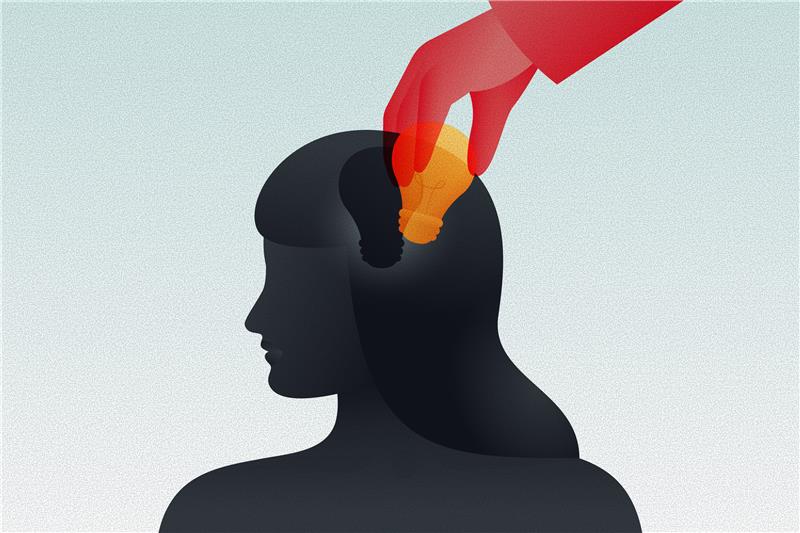Developing, Employee Experience, Retention Strategies, Talent Management, Training & Development
Employee training and development isn’t just about teaching employees to do their jobs. It’s about showing employees they are valued and that upward movement in the organization is possible. When employees don’t see opportunity, they don’t bring their best selves to work.
“Give a person a fish and you feed them for a day; teach a person to fish and you feed them for a lifetime.”
It’s a proverb we all know — so common it’s become cliché. But clichés come from truth. Amid the busyness of running a business, it’s easy to forget the importance of training and development in creating a thriving workplace.
How often have you said, “I’ll do it myself” because teaching someone else seemed too time-consuming? But how often are you also frustrated the next time that same task comes around, and you still have to do it yourself?
Of course, employee training isn’t just about delegating or making things easier for management. A solid and unique training and development program can give employees a sense of ownership in their role and a future vision with the organization.
And when companies don’t invest in learning and development and create paths for growth (beyond pay bumps), employees will start looking for jobs elsewhere.
In fact, in a 2021 Pew Research Study, 63% of respondents said having no opportunities for advancement is what pushed them out the door. Lack of growth opportunities was the top reason for leaving — above pay, benefits, and workplace flexibility.
A recent Great Place To Work® LinkedIn poll also shed light on the critical importance of training and developing employees for retention. According to the poll, 43% of people called out a lack of growth opportunities as the top reason they quit their last job.
63% of employees cite no opportunities for advancement as the top reason they quit.
“Employees view it as a way of support,” says Julian Lute, senior manager and strategic advisor at Great Place To Work. “You’re assisting them in doing their jobs. But if you go one level deeper, you’re also supporting this very human need for growth. When people don’t see themselves growing, you don’t get the best out of them.”
What is an employee training and development program?
An employee training and development program is a series of educational activities designed to improve employees’ knowledge and skills.
The most obvious type of employee training is technical training — teaching them their job duties, the company’s processes and systems, and the organization’s overarching mission and mandate. But training can also cover soft skills such as people management or upskilling beyond an employee’s current role to prepare them for a promotion.
Training and development opportunities can take many different forms, such as group workshops, one-on-one sessions, formal education (such as college or university), job shadowing, mentorship, seminars, or job sharing.
The key benefits of employee training and development
Employee training and development programs aren’t just a “nice-to-have” — they are a strategic necessity. And the benefits go two ways: The employee feels more valued and better skilled, and the employer sees increased productivity and innovation.
The benefits of training and development for employees
A good training program not only enables employees to learn and practice skills to support them in their current role — it also gives them a stepping stone into new opportunities.
The best results come when training aligns personal growth with professional goals. Where do your employees want to be in a few years? What skills do they want to learn? What areas of the business interest them the most?
Making that connection is when the magic happens:
- Improved job performance — Employees become more effective and efficient at their tasks, leading to better business results
- Increased job satisfaction — Employees feel valued and supported, boosting morale
- Opportunities for advancement — Employees are prepared for new responsibilities and internal promotions, creating a clear career path
The benefits of training and development for organizations
Employees aren’t the only ones who benefit from training programs. By offering development opportunities, companies can build a workforce that is more efficient, more motivated, and better equipped to bring forward new ideas.
Organizations that prioritize learning see tangible benefits, such as:
- Increased innovation and adaptability — Teams stay competitive by learning new technologies and methodologies
- Higher retention — Employees are less likely to leave when they see growth opportunities
- Reduced hiring costs — Developing internal talent is more cost-effective than external recruitment
- Strengthened employer branding — Companies that show they have robust training programs attract top talent
On the other hand, not offering employee training and development can have a serious impact on your bottom line. Research by McKinsey & Company found that lack of skills and inefficiency could cost a median-size S&P 500 company roughly $163 million per year.
The 4 approaches to employee development
While the types of employee training and development programs can be as varied as your employees themselves, all training plans will typically fall into one of four categories:
- Formal education — The formal training and practical requirements for a given role, such as a specific degree, licence, or certification
- Assessment — The employee performance reviews, one-on-ones, and any other efforts used to measure strengths and weaknesses and find ways for employees to improve
- Job experience — The day-to-day, hands-on learning employees do as they master their roles, take on new challenges, and grow within the organization
- Interpersonal relationships — The coaching, mentorships, and any soft skills or interpersonal training employees may complete, such as customer service training, resilience training, mental health education, or conflict resolution training
Why it’s important to train and develop your employees
Employee training and development is important for ensuring that staff are prepared for their role; that they feel supported, valued, and capable; and that they have upward movement. Training and development can have a direct impact on employee engagement and retention and should be an integral part of your talent management strategy.
Engaged employees want to grow, and they want to be challenged. They aren’t looking to simply work at a job; they are looking to further their careers.
Learning and development are at the core of Panda Restaurant Group’s employer value proposition (EVP). On Panda’s careers website, learning and development is front and center.
Founders Andrew and Peggy Cherng are deeply committed to being the world leader in people development, providing growth opportunities for associates professionally and personally at every level.
Panda’s commitment to opportunities for advancement is strongly linked to their employees’ intent to stay. When asked what makes the company a great place to work, employees at Panda frequently mentioned the words “growth,” “grow,” and “development.”
“Compared to other companies I have worked with, Panda truly exemplifies what it means to care about people. I feel like my team always has my growth and development in mind and challenges me to be better. They offer so many resources to develop myself personally and professionally. I really feel like part of the Panda family and look forward to staying for many more years. It really is a great place to work.”
— Employee at Panda Restaurant Group
Employee training and development is both present- and future-focused. Employee learning programs support your people in meeting the challenges of the business today and create a pipeline of leaders to meet the societal and technological challenges of tomorrow.
Julian says employee training also ensures people feel valued and that their employer sees them playing a role in the long term. This feeds into the overall company culture. In fact, in our survey of employees at the 2023 Fortune 100 Best Companies to Work For®, 87% said they often or always feel like they are offered training and resources to develop professionally.
“This is the way that people feel valued in the business,” Julian explains. “If you’re training me, you’re telling me that you want me to be prepared for the future of the organization.”
The difference between training and development
While employee training and development are commonly lumped together, and both serve a critical role in the employee experience, there is an important distinction between the two.
- Training is job-specific. It is ensuring an employee has the correct tools and learns the correct skills to complete their tasks. It is immediate and measured in short-term results.
- Development is about employee growth. It is long-term and more behavioral-focused.
“Development is much more of a conversation than training,” says Julian. “Where do you want to grow? How do we need you to grow? It requires a bit more vulnerability. Training assumes you have a skill gap or knowledge gap, whereas with development, you must be willing to lean into it to fully realize the benefits.”
For example, Mastercard has a company philosophy of “Owning Your Career” with ongoing conversations between employees and their managers about career development opportunities. Objectives are set, goals are agreed upon, and there are dedicated discussions about career growth and progression.
Similarly, American Express has a career and development plan template for employees to map out their career journey, thinking through where they’ve been, how they want to grow, and what sort of support they might need along the way.
Both employers demonstrate how employee development is a two-way conversation, not a one-way, top-down instruction. This kind of approach to employee development can have a huge impact on employee engagement, especially among younger demographics.
Development is a two-way conversation, not a one-way, top-down instruction.
At Panda Restaurant Group, for example, retention among millennial employees is particularly high, thanks in part to its mentorship approach and its “University of Panda” program, which helps employees earn certifications and continue their career growth outside of the workplace.
Job seekers go where they can grow
Given the basic human desire for growth that Julian mentioned, companies that are seeking top talent would be wise to promote their training and development efforts. Featuring opportunities for growth and development as major benefits in its EVP demonstrates an employer’s commitment.
Use your career site to highlight your company’s opportunities for professional growth and development — whether it be challenging work assignments, a strong investment in training and development programs, frequent opportunities to work closely with senior leaders, or a commitment to promoting from within.
“Even if you don’t know where people want to be in their life or what’s important to them, I guarantee you there is something at the end of the rainbow for them,” says Julian. “And training and development is the way that people feel valued.”
Tech company Bitwise Inc., for example, is attracting a wider pool of candidates by removing degree requirements from the recruitment process. Instead, the company offers training to promising new talent who wants to break into the industry but might otherwise be overlooked.
Delta Air Lines is proactive about attracting aspiring pilots through its “Propel Pilot Career Path Program.” Students complete certified flight instructor training and can then work up to becoming a first officer at a Delta Connection carrier. As of 2025, 171 participants now fly for Delta, with 870 aspiring pilots currently enrolled.
Developing by building an internal talent marketplace
Some organizations are helping employees advance with an internal talent marketplace. An internal talent marketplace is a platform or system within an organization that facilitates identifying, developing, and retaining top talent by providing employees with opportunities for growth and career advancement.
This marketplace enables employees to explore different roles, projects, or positions within the company, promoting internal mobility, skill development, and cross-functional collaboration.
For example, energy management company Schneider Electric has developed its own “Open Talent Market,” used by Schneider employees to plan their careers, seek out new opportunities within the organization, and develop their skills.
By creating an internal talent marketplace, organizations can better retain talent, improve employee satisfaction, and enhance their overall agility while reducing the need for external hiring.
Examples of unique employee training and development programs
Employee training and development programs at the Best Workplaces™ go beyond the day-to-day of employees’ jobs — they feature everything from professional development courses for future promotions, to emotional intelligence training, to wellness workshops.
For example, the benefits team at Panda offers a monthly series of educational webinars covering topics such as healthy habits, nutrition, sleep, finance, and self-care. They also work directly with regional and department leaders to curate programs specific to their teams and provide free wellness coaches to teams in need.
At The Cheesecake Factory, managers are trained in de-escalating emotionally charged situations and given tools for understanding how to connect with others and find commonality amid diversity. The organization also provides resources to support employee mental health, addressing the importance of training and development for both personal and professional well-being.
Similarly, industrial services distributor Grainger has a mandatory e-learning course on unconscious bias. The one-hour course outlines what unconscious bias is, explores how it may emerge in day-to-day work, and offers effective behaviors for managing it.
The Best Workplaces also offer training programs that are ongoing, beginning on an employee’s first day and carrying through their entire life cycle with the company. They know that training applies to all levels of staff, from frontline workers to the C-suite, with a focus on forward momentum for all.
At HubSpot, for example, learning and development starts on day one, with a robust orientation and onboarding experience. No matter the role, team, or level, all new hires undergo one week of new employee training together to learn about HubSpot’s culture, missions, values, and operating model. The company also offers a global mentorship program to help employees of every tenure reach their full potential.
Consulting firm Plante Moran has another unique approach to staff development, with partners directly accountable for guiding and mentoring their team members. The aim is personalized coaching that ensures each staff member’s career development is tailored to their individual needs. It also creates a legacy of leaders training the next generation of leaders.
Some workplaces offer special events focused on training and development, such as Intuit Inc.’s “Career Growth Sprint.” This biannual virtual event features keynotes and workshops covering topics such as goal setting, time management, and communication.
Grocer and manufacturer Publix hosts career fairs for its associates to learn what opportunities are available at the company. Employees also have access to tuition reimbursement and funding for GED testing, and pharmacy associates are eligible for financial support to attend pharmacy school. The company also offers specialist training programs for drivers and technicians.
5 steps to building a successful training plan
For an employee training and development plan to be successful, you need to ensure it’s focused on the right things, suitable to the audience, and measurable. And you need to be willing to revise as needed, based on both results and stakeholder feedback.
Here are five steps to ensure you roll out an employee training and development plan efficiently and successfully.
1. Assess what’s needed
Before any plan takes shape, assess what is needed — both by the organization and by the employee. This applies to both company-wide training and personal development plans. Which areas should you focus on? What is the organizational strategy and how does this fit into an employee’s own role and personal goals?
“You really have to incorporate it into the workflow,” says Julian. “Ascertain what people need and directly deliver to that.”
For example, your company could be rolling out a new software program that’s going to change how your sales team tracks leads. It will be a critical change for the business and the initial plan may be to train only those who will use the new program day-to-day. What about the employees whose personal goal is to join the sales team? Learning such a program could help them make that move.
“Get feedback using employee surveys,” says Julian. “People will tell you what they need help with or training on. Sometimes leaders think that because we got this new thing, or because some consultant tells you, ‘You need this, it’ll make you more efficient.’ Start with what you know employees need and what they’re telling you they need.”
2. Set clear objectives
What do the organization and the employee each hope to gain? It could be something job-specific like learning a new program or process, or something more behavioral-based like emotional intelligence training. Determine what you hope to achieve and how you’ll measure success.
It’s also important that employees understand the objectives just as well as management does, and why a particular training or development plan is important. This is especially the case when it’s long-term, behavioral-based programs like leadership training.
“Employee training is most effective when leaders are demonstrative,” says Julian. “When communicating new learning programs, talk about it through the lens of company values. For example, ‘We’re doing this in service of our customers and that’s one of our values.’ … Be very clear about what this is supposed to change. Help people understand the impact and why you’re training people.”
3. Design and develop
Once needs and objectives are set, it’s time to create a program or plan that considers the following:
- What content or materials are needed?
- How will the training be delivered?
- Who will lead the training?
- How often will training sessions take place?
- Where will the training happen?
- For group trainings, what size will the groups be?
- What are the participants’ learning styles?
Julian recommends that participants be given the chance to talk through the training, to understand what fits and wrestle with problems, rather than running passive sessions where the trainer talks and participants sit and listen.
He also notes that bite-sized lessons and trickling the training down from large groups to small groups to the individual level, like a waterfall, tends to work best.
Trickling the training down from large groups to small groups to the individual level, like a waterfall, tends to work best.
“I would not expect to put people in a room for 90 minutes at one time and expect they get all the information they need,” he says. “A big group is a way to get people on the same page. Then move people into smaller groups so that they can really engage with the learning content. A group of eight or fewer is ideal for getting more granular. And then find ways for people to individually test their knowledge.”
4. Implement
Once the training plan is developed, it’s time to roll it out — strategically. A pilot program with a small group of employees can help you refine a plan and ensure it’s hitting all the right notes, both for the organization’s objectives and employees’ expectations.
“Don’t try to boil the ocean,” warns Julian. “Figure out who the test people are and pilot this with a small group of people. Take feedback. Make sure it’s really aligned with the business needs.”
Only after you’ve piloted the program and adjusted as needed is it ready to roll out to the wider organization.
5. Evaluate and revise
Finally, don’t file the training plan away once it’s completed. Solicit feedback from both employees and managers using employee surveys to identify both successes and weaknesses. Use the measurements you set early on to check whether the training achieved its objectives.
Providing employee training and development opportunities can enhance job satisfaction, boost productivity, and improve employee retention. Equipping employees with new skills and knowledge increases their potential for advancement within the company. It’s a win-win situation for everyone involved.
Elevate employee experience
Ensure your best people thrive and stay. Benefit from continuous culture support and our proven model to keep your team committed.











